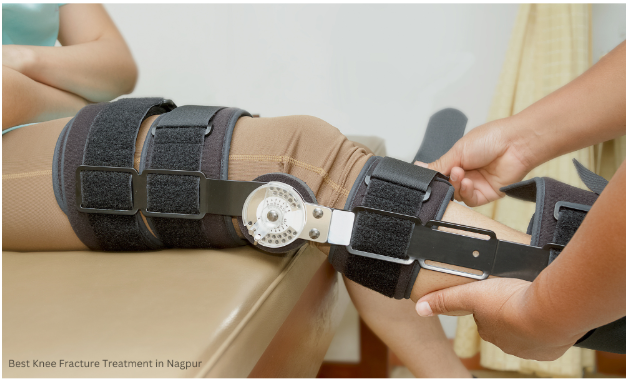Best Knee Fracture Treatment in Nagpur

A Comprehensive Guide on Best Knee Fracture Treatment
Anatomy of the Knee The knee joint is among the largest and most intricate joints in the human body, serving as the connection between the femur (thigh bone) and the tibia (shin bone). The patella, commonly referred to as the kneecap, is a triangular bone that safeguards the knee joint and is essential for both movement and stability.
Consequences of a Patella Fracture A fracture of the patella occurs when the kneecap sustains a direct blow or experiences excessive force, which may result from a fall, a sports-related injury, or a vehicular accident. Such a fracture can lead to considerable pain, swelling, and an inability to extend or support weight on the injured leg. The severity of the fracture can vary, ranging from a simple crack to a complete break accompanied by displacement of the bone.
Types of Patella Fractures:
- Stable Fracture: The bones maintain their position with slight displacement.
- Displaced Fracture: The fragments of the bone are misaligned and may necessitate surgical treatment.
- Comminuted Fracture: The patella is fractured into several fragments.
- Open Fracture: The bone protrudes through the skin, heightening the risk of infection.
Signs and Symptoms of a Broken Patella
-
Intense discomfort in the knee
-
Swelling and discoloration
-
Challenges or inability to fully extend the knee
-
Inability to support weight
-
Apparent deformity or spaces in the kneecap
Recovery from a Patella Fracture
The healing process is contingent upon the fracture’s severity. Stable fractures typically mend with the use of a cast or brace for immobilization, whereas displaced or comminuted fractures frequently necessitate surgical procedures. The post-treatment regimen emphasizes pain relief, adequate rest, and a progressive introduction of weight-bearing exercises.
Rehabilitation Following a Knee Fracture
Restoring mobility and strength heavily relies on effective rehabilitation
The focus of physical therapy includes:
-
Enhancing knee flexibility
-
Fortifying the muscles of the thighs and calves
-
Reestablishing balance and coordination
-
Averting stiffness and potential long-term issues